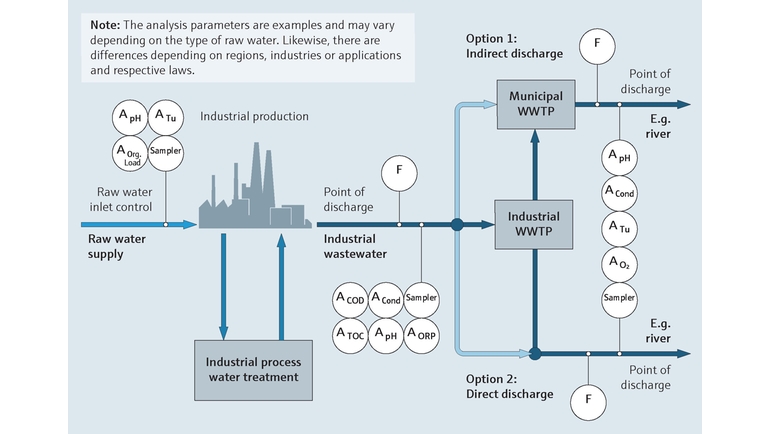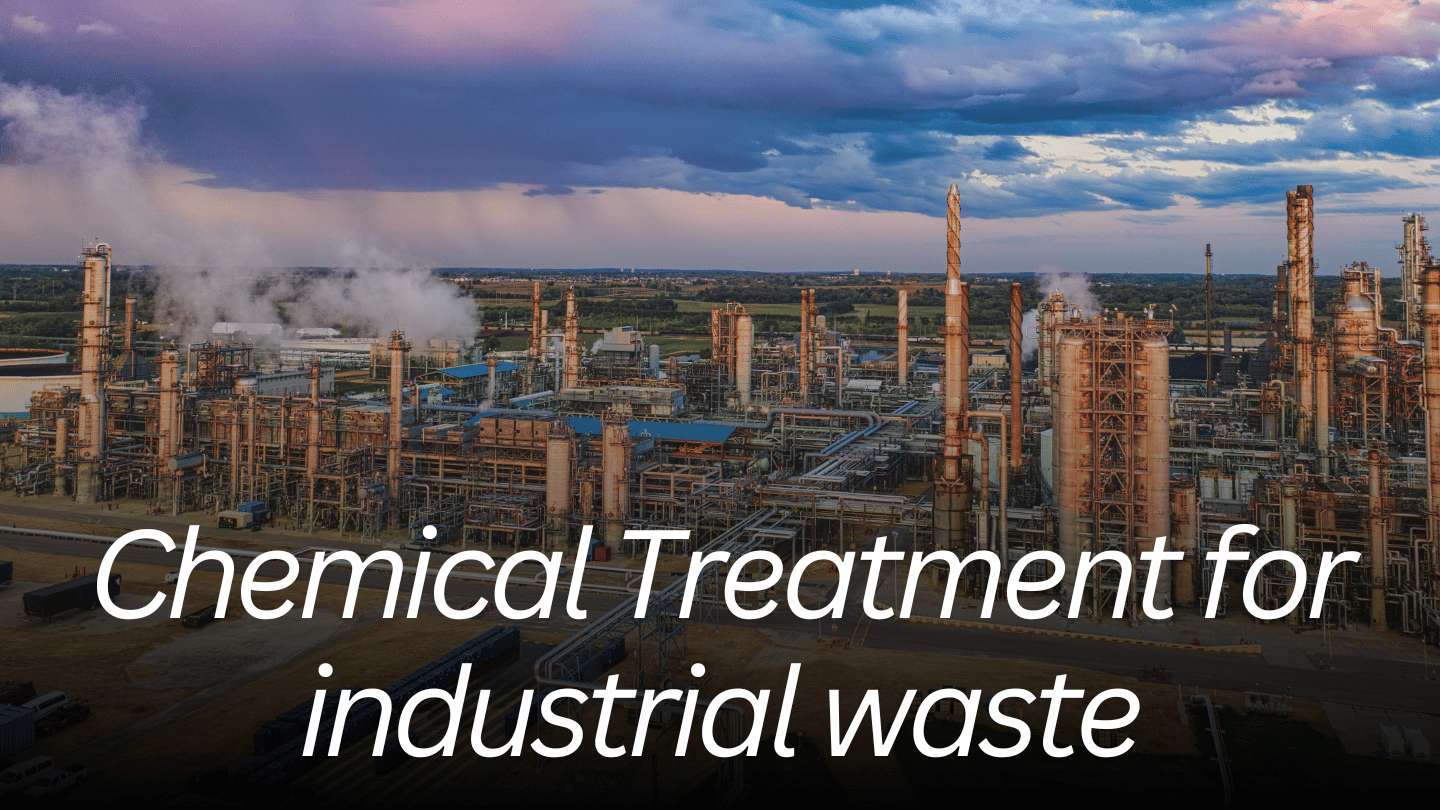Industrial Waste Water Treatment-- Comprehensive Systems for Wastewater Disposal
Industrial Waste Water Treatment-- Comprehensive Systems for Wastewater Disposal
Blog Article
Challenges and Solutions in Hazardous Waste Water Therapy
The treatment of industrial wastewater presents a complex selection of obstacles, ranging from strict regulatory compliance to the complexities of cost management and technical restrictions. The variability in waste composition even more complicates the effectiveness of typical therapy techniques, frequently resulting in escalated functional expenditures.
Regulatory Compliance Obstacles
Exactly how can commercial centers navigate the facility landscape of regulatory conformity in wastewater treatment? The regulative structure governing wastewater management is complex, typically differing by jurisdiction and type of sector.
To effectively handle these compliance obstacles, facilities ought to apply robust tracking and reporting systems that make sure real-time data collection and evaluation. Regular audits and danger evaluations can recognize potential compliance spaces, enabling for aggressive adjustments in treatment processes. Worker training programs concentrating on governing knowledge and ideal practices are important to promote a culture of compliance within the organization.
Additionally, involving with regulative firms can offer important insights and clarify unclear laws. Facilities might additionally gain from speaking with ecological experts that concentrate on wastewater therapy compliance, guaranteeing that they remain informed of evolving laws. By taking on these methods, industrial facilities can not just fulfill conformity demands yet likewise boost their operational performance and ecological stewardship.
Expense and Financial Barriers
Navigating governing conformity in wastewater treatment frequently presents significant monetary challenges for commercial centers. The costs related to executing necessary treatment innovations, keeping compliance with rigid policies, and taking care of operational costs can be daunting. Lots of organizations deal with high first capital investment for the construction or updating of wastewater treatment plants, which may stress spending plans, specifically for little and medium-sized ventures.
Moreover, continuous operational expenses, including maintenance, labor, and chemical inputs, add to the economic burden. The unpredictability of fluctuating energy costs and the potential requirement for additional financial investments to fulfill advancing guidelines aggravate these financial pressures. Oftentimes, the lack of economic rewards or support from federal government bodies makes it also extra tough for organizations to validate investments in innovative therapy systems.
Additionally, the economic feasibility of wastewater therapy options is typically examined, particularly for sectors with limited revenue margins. It is important for commercial centers to explore economical techniques, such as taking on ingenious funding options, engaging in collaborations, and leveraging arising technologies that can assist reduce these economic barriers while making sure compliance with ecological requirements.

Technical Limitations
Numerous technical restrictions impede the performance of commercial wastewater therapy processes. One significant difficulty is the inadequacy of existing therapy technologies to resolve intricate impurities.
In addition, the scalability of therapy innovations postures a difficulty. While some sophisticated techniques, like membrane purification or sophisticated oxidation, reveal pledge in controlled settings, their execution on a bigger scale can be prohibitively pricey and practically challenging. Maintenance and operational intricacies additionally make complex the fostering of these systems, particularly for smaller sized sectors with minimal technical know-how.
The integration of real-time surveillance modern technologies additionally continues to be insufficient in lots of therapy facilities. Without efficient surveillance systems, drivers can not effectively evaluate therapy effectiveness or spot prospective failures, causing irregular effluent high quality. Consequently, dealing with these technical limitations via research and development, together with financial investment in ingenious remedies, is essential for enhancing the effectiveness of industrial wastewater therapy and making certain governing compliance. Industrial Waste Water Treatment.
Irregularity in Waste Structure
In the realm of commercial wastewater treatment, the irregularity in waste composition provides a formidable challenge. Industries produce wastewater with diverse characteristics, influenced by factors such as production procedures, basic materials, and functional practices. This heterogeneity complicates the treatment process, her latest blog as standard systems frequently struggle to effectively deal with the large range of pollutants existing.
For example, wastewater from food handling might contain high levels of organic matter, while effluents from chemical manufacturing might consist of heavy steels and unsafe materials. This difference demands adaptable treatment approaches to ensure conformity with ecological guidelines and secure public health and wellness. Additionally, variations in waste structure can happen with time, influenced by modifications in production routines, upkeep tasks, or the intro of new items.

Cutting-edge Therapy Solutions
Ingenious therapy options are important for attending to the complexities of commercial wastewater monitoring. Conventional techniques commonly fall short in efficiently getting rid of a wide variety of pollutants, especially in centers with varied effluent streams. Current developments concentrate on integrating innovative innovations to enhance therapy effectiveness and sustainability.
One promising strategy is using advanced oxidation processes (AOPs), which utilize powerful oxidants to degrade natural contaminants. AOPs, consisting of photocatalysis and ozonation, can substantially decrease poisonous substances and improve effluent top quality. Furthermore, membrane layer bioreactor (MBR) modern technology has actually gained grip, incorporating biological treatment with membrane filtration, resulting in top notch effluent and find here decreased impact.
One more cutting-edge solution is the implementation of resource healing systems. Strategies like anaerobic digestion not only treat wastewater but additionally create biogas, which can be utilized as a renewable resource source. The fostering of synthetic intelligence and equipment discovering versions can maximize treatment procedures by anticipating variants in wastewater composition, thus enhancing operational efficiency.
These innovative solutions not only address regulatory conformity but additionally advertise ecological sustainability, leading the way for a more effective and durable industrial ecological community.
Conclusion
In verdict, resolving the challenges of commercial wastewater treatment needs a diverse method that incorporates regulatory compliance, price administration, and technological advancements. Ingenious solutions, such as sophisticated oxidation processes and membrane bioreactor modern technology, offer paths to enhance treatment effectiveness. Additionally, real-time tracking systems and collective engagement with governing firms can promote lasting methods while mitigating economic pressures. A commitment to constant renovation in treatment approaches will inevitably add to the efficient management of commercial wastewater and ecological defense.
The treatment of commercial wastewater provides a complex selection of difficulties, varying from stringent regulative conformity to the details of price monitoring and technical restrictions. my site Industrial Waste Water Treatment.Browsing governing conformity in wastewater therapy usually offers substantial monetary challenges for industrial centers. Resolving these technological constraints with study and growth, along with investment in innovative services, is important for enhancing the effectiveness of industrial wastewater treatment and ensuring governing compliance
Wastewater therapy facilities need to invest in durable monitoring systems and versatile treatment modern technologies capable of fitting varying influent features.In conclusion, resolving the difficulties of commercial wastewater treatment requires a diverse approach that incorporates governing conformity, cost management, and technological improvements.
Report this page